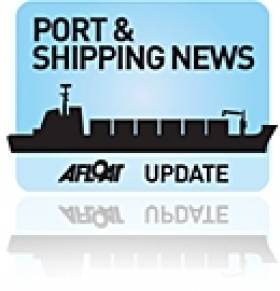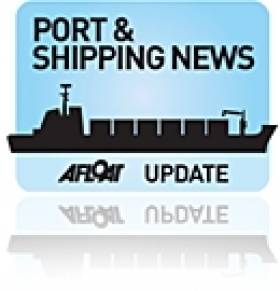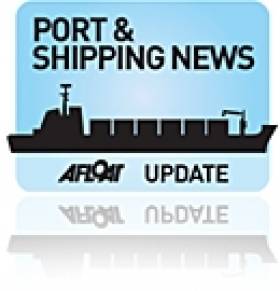Displaying items by tag: SPP Shipbuilding
#ArdmoreExpansion – Cork based Ardmore Shipping say they have begun the execution of their product and chemical tankship fleet explansion plan, according to MarineLink.com
The company has put the plan into effect by exercising options on a further two 50,300-dwt IMO 3 eco-design product tankers ordered from SPP Shipbuilding Co. Ltd, South Korea. ("SPP").
This extends the series from SPP to a total of eight new ships with deliveries beginning in January 2014. The two-ship package has a cost of approximately $68,500,000 inclusive of ballast water treatment systems.
Ardmore expects to take delivery of these vessels from SPP in the second and third quarters of 2015.
Recently, Ardmore raised $140 million in an I.P.O. having successfully secured funding for fleet expansion via the IPO on the New York Stock Exchange. For more on this development the IMDO has a report.
Expanding Fleet at Ardmore Shipping
The newbuilds contracts are for a pair of 17,000 deadweight tonnes (dwt) chemical tankers which will be IMO II classified. The 144m twins have a beam of over 22m and a draft of 9m and they will be around 9,000 gross tonnes.
Both the newbuilds were ordered from the Hamburg-based Hellespont in 2009 and are the last in a series of eight tankers being built by the Sekwang Shipbuilding facility in South Korea. The newbuilds are expected to be delivered in April and July 2012.
In the second separate deal Ardmore Shipping has agreed to charter the Hellespont Commander and Hellespont Crusader (photo) which are also 17,000 dwt IMO II chemical tankers for a one year period with an option to extend the charter for a further year. The 2010 built vessels will enter the Navig8 Brizo-8 chemical tanker pool for trade and commodity chemicals.
Anthony Gurnee, CEO of Ardmore Shipping Ltd, commented: "We are very pleased to have taken on the contracts with Sekwang Shipbuilding for these two newbuild vessels, which will join our fleet next year, and with our charter agreement for the Hellespont Commander and the Hellespont Crusader."
The chartered vessels join the Ardmore Shipping which brings the fleet to six ships which include: Ardmore Centurion, Ardmore Seatrader, Ardmore Seamaster and Ardmore Seafarer.
When the two newbuild vessels enter service in 2012, Ardmore Shipping will still be in expansive mode as they have ordered two 51,000 dwt double hull IMO III chemical/product tankers for delivery in 2012 and 2013.
Tanker Newbuilds for Cork-Based Global Operator
Ardmore Shipping Ltd manages the activities of the Ardmore Shipping Group, which is engaged in the ownership and operation of chemical and products tankers trading on a worldwide basis. The Irish registered company runs its global fiscal operations from the group's head-office based in Cork.
Like the existing fleet, the newbuilds are also to be registered in Majuro, the capital of the Marshall Islands, a republic nation in the Pacific Ocean. The Micronesian nation of atolls and islands attained independence 25 years ago under a Compact of Free Association with the United States.
Last month, two vessels entered service for the company, the Ardmore Centurion (2005 / 28,987 dwt) formerly the Elisa, is to date the company's only joint chemical and products tanker. The second December debutant was the slightly older, Ardmore Seatrader (2002 / 47,141 dwt) a products tanker, formerly the St. Georg. In fact both vessels were handed over within a 12-hour timeframe and on opposite sides of the world.
When the second newbuild is completed in 2013, this will bring to three the number of chemical and product tankers in service, with the Ardmore Centurion, which was also built in South Korea but at the STX Shipyard Jinhae. The Ardmore Seatrader, built by the Onomichi shipyard in Japan, now forms the third product-only tanker, out of the four-strong mixed vessel type fleet.
This leaves the two remaining product tankers, the Ardmore Seamaster (2004 / 45,840 dwt) which entered service in October. The vessel was the former Formosa 12 and was also built in Japan but at the Shin Kurushima shipyard. She will be employed under a long-term charter to D/S Norden of Copenhagen.
The last vessel of the Ardmore Shipping Group fleet, is the Ardmore Seafarer (2004 / 45,744 dwt) which entered service in July. The former Zoa Express, was completed at the Minami-Nippon Usuki shipyard in Japan. She was re-named in honour of the Ardmore's seafarers and in recognition of 2010 as the International Maritime Organisation (IMO) Year of the Seafarer.
Interestingly that in the Year of the Seafarer, in particular for the welfare of the crew of the Ardmore Seafarer, she came under the threat of pirates!... While on route from Dar Es Salaam to Fujairah the vessel was attacked by the pirates, 1,000 (nm) nautical miles off Somalia and some 500 nm off the coast of India. Thanks to quick and decisive actions, Captain Benamu and his crew evaded capture, ensuring that the pirates were unable to seize control of the 179m (length) X 32m (breadth) vessel. To see a photograph of this vessel click the link HERE































































